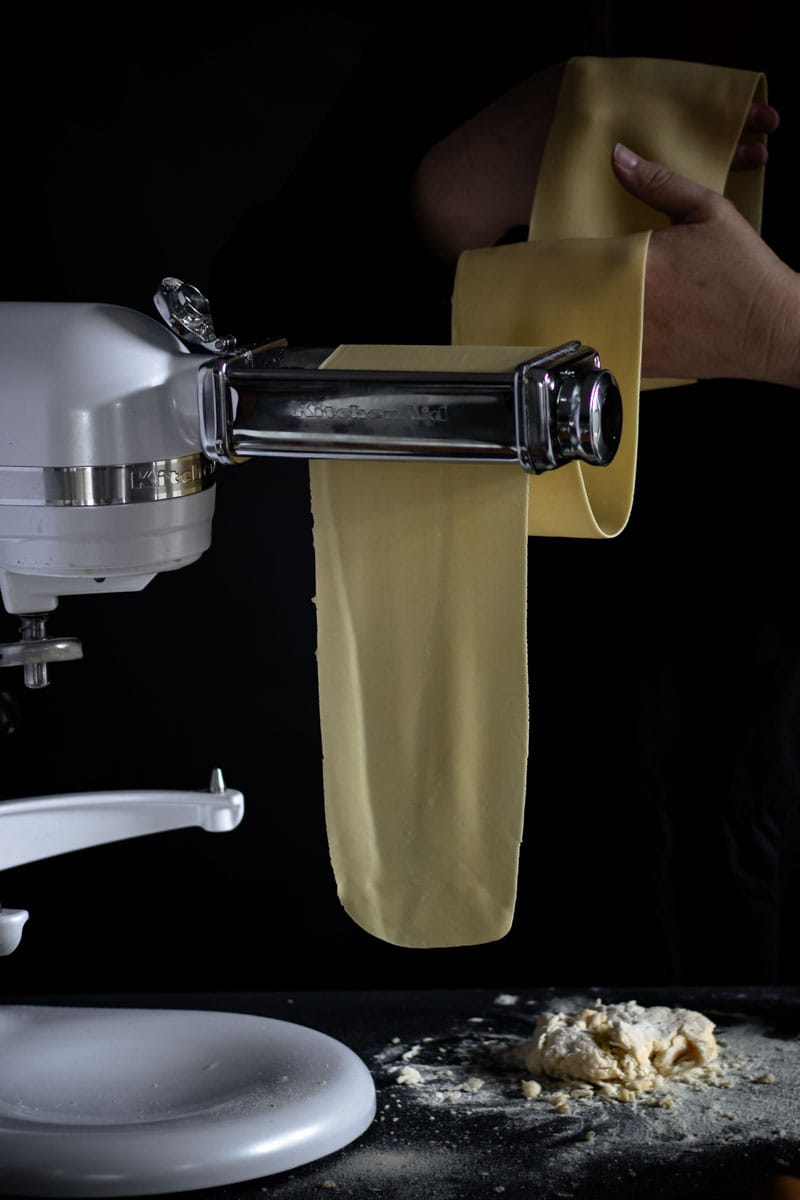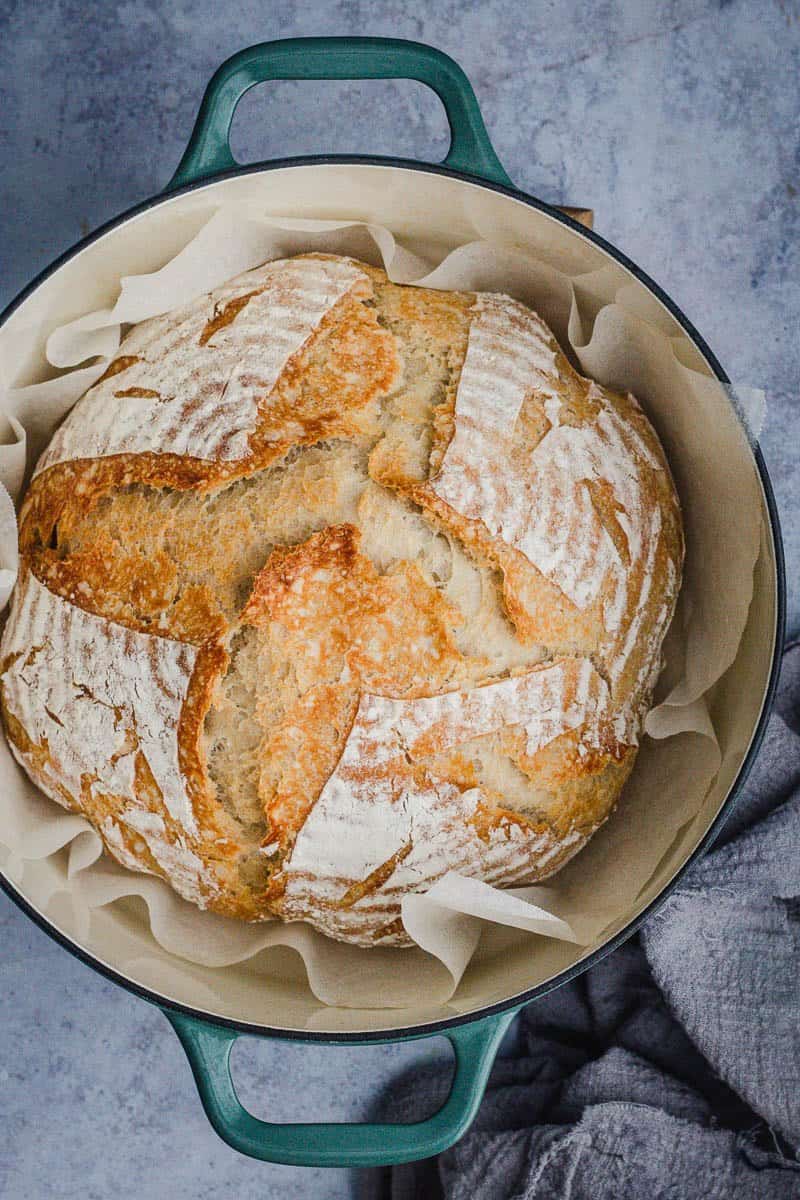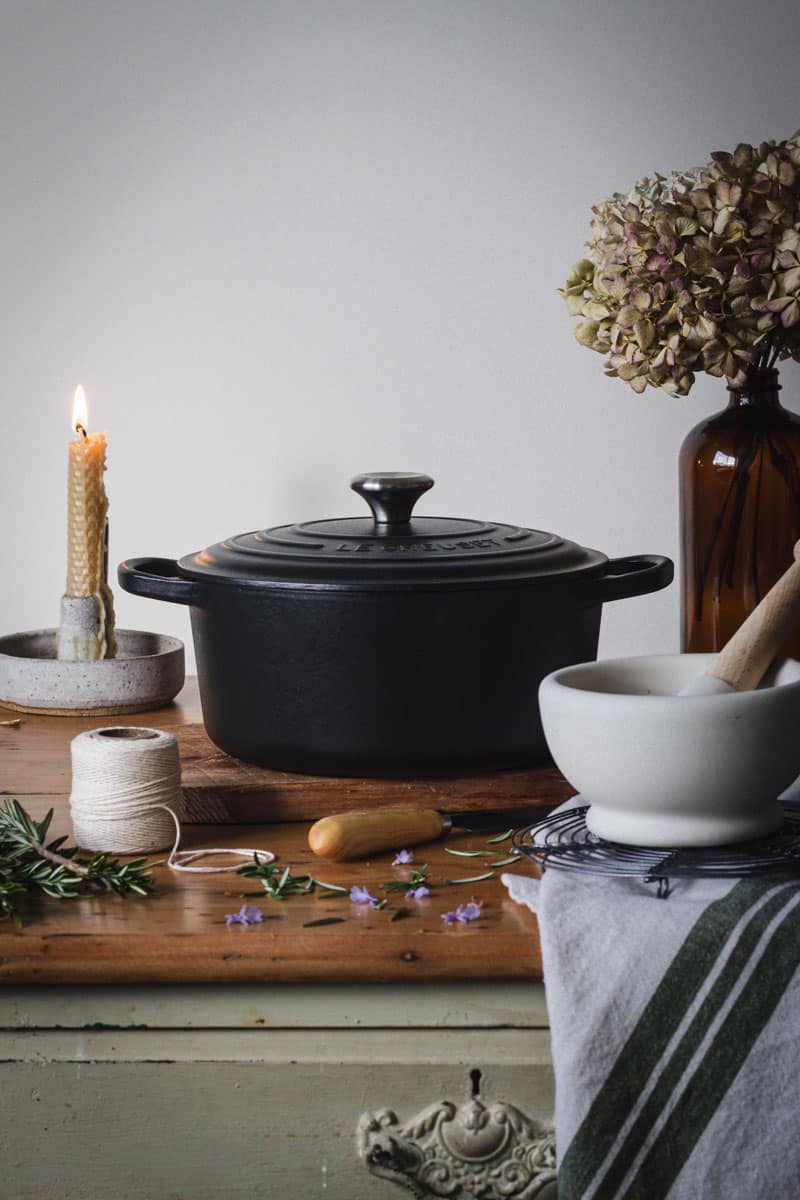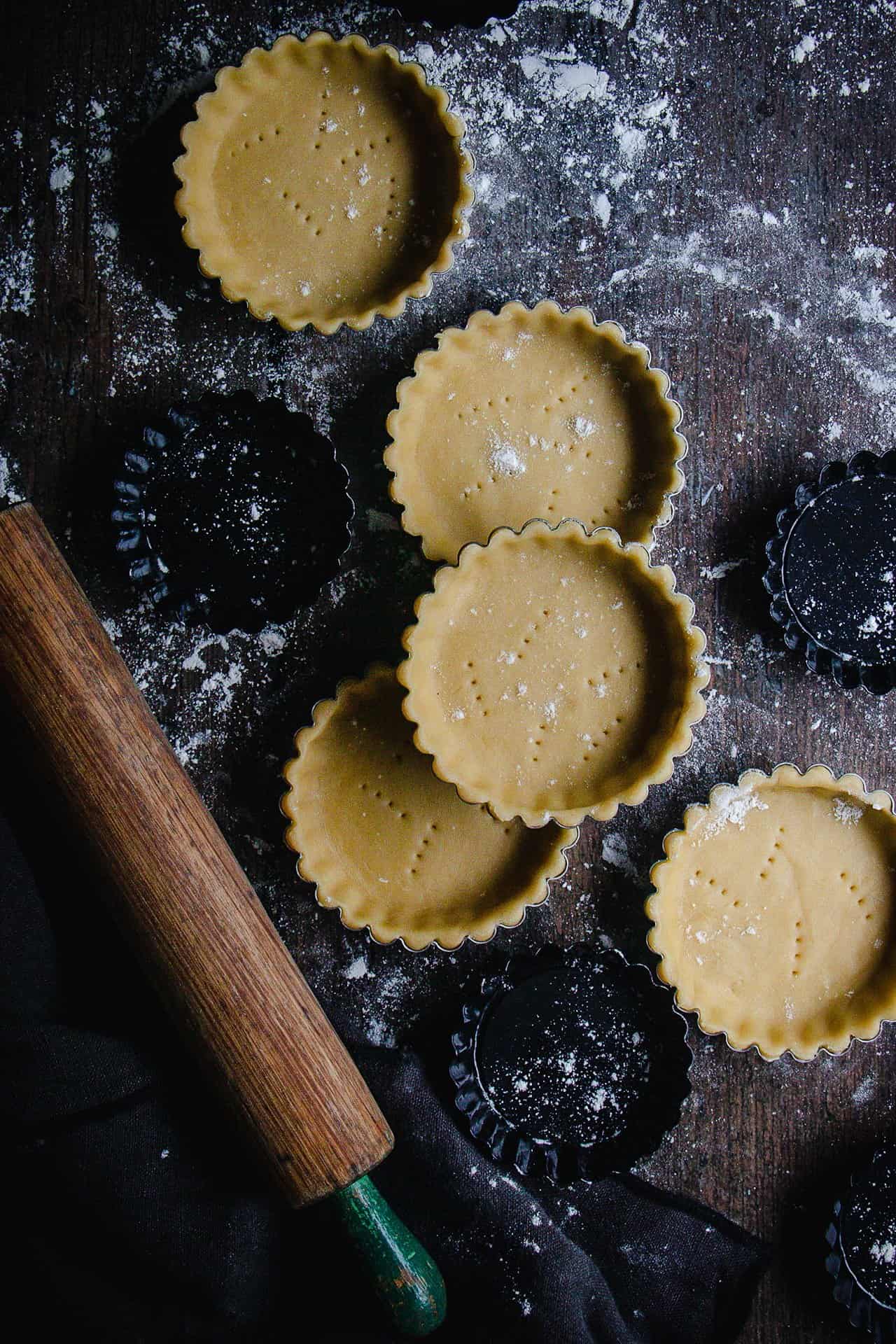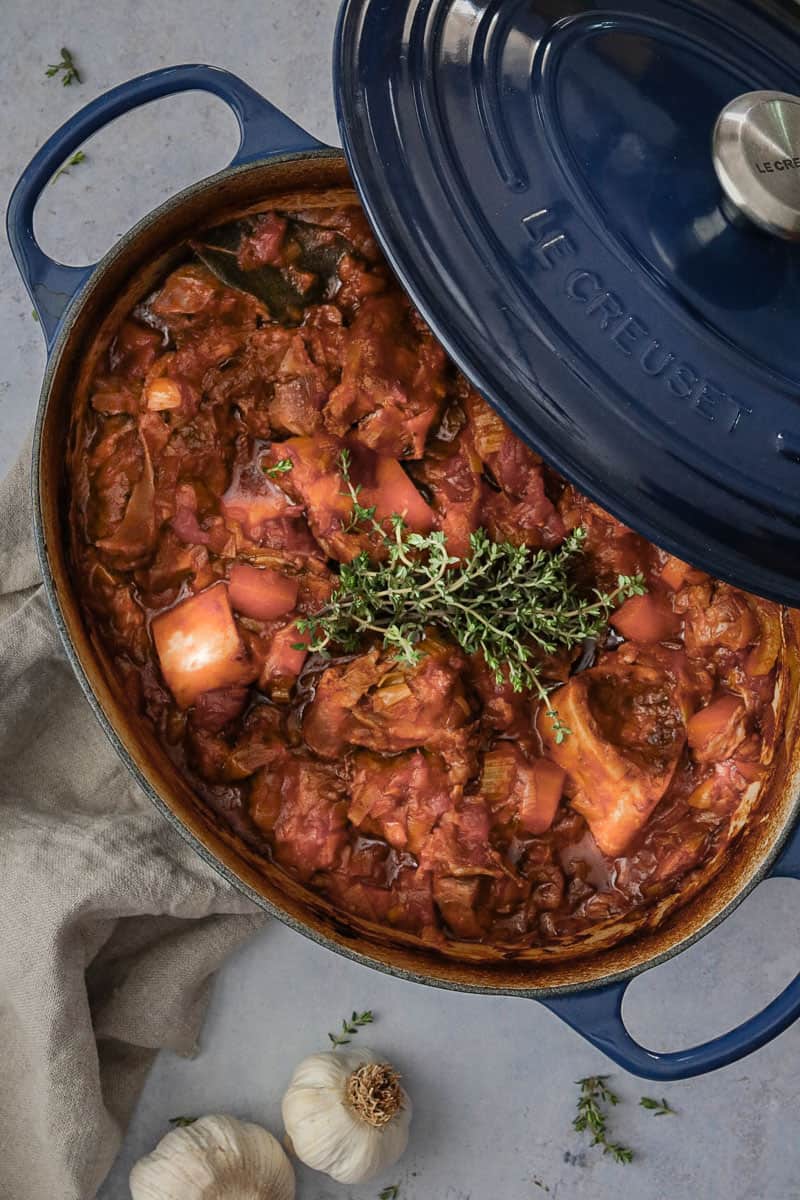How To Care For Enamel Cast Iron Cookware
While good quality enameled cast iron cookware can be an investment for your kitchen, it is unrivaled when it comes to its durability and versatility. I have pieces that I inherited from my Mum nearly twenty years ago that are still going strong. But to get that kind of lifetime, they require an understanding of the best practices for how to care for your enamel cast iron cookware. It’s not rocket science, but there are simply some do’s (and don’ts) that come with owning enameled cast iron cookware.
Ok, so here we go…
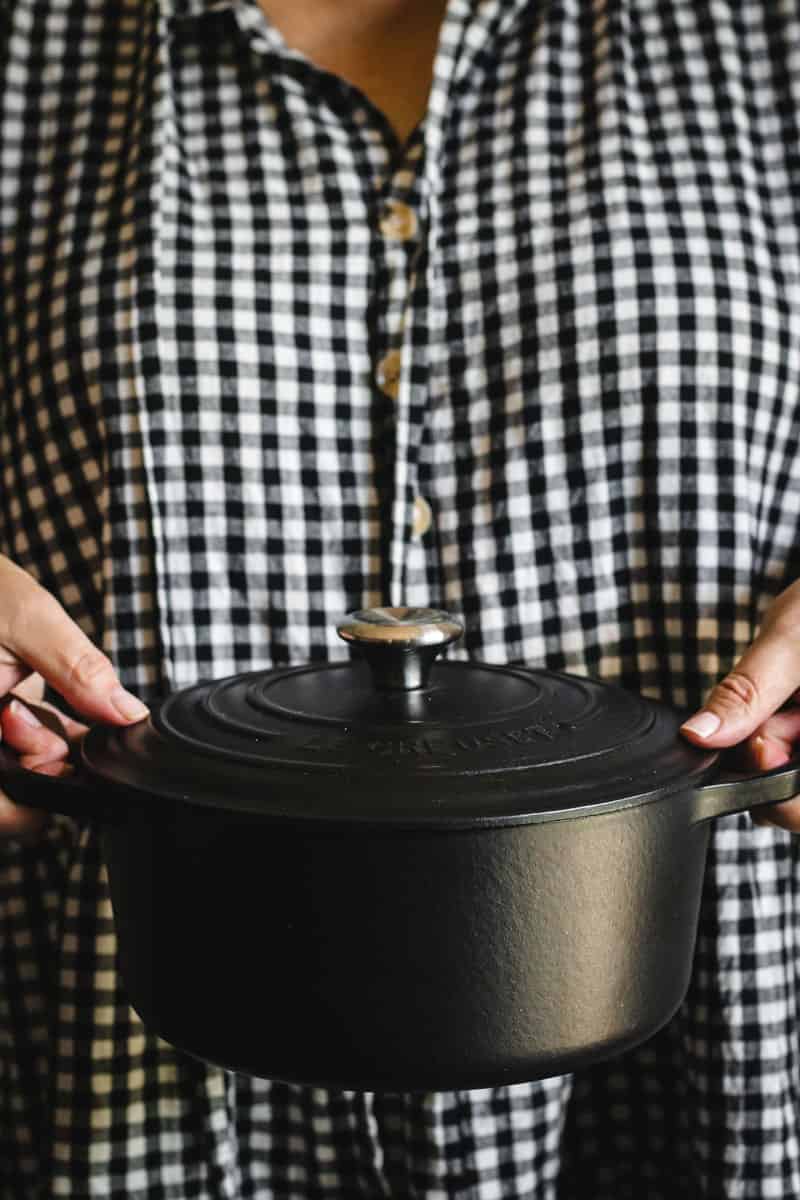
So first… What is enameled cast iron?
Enameled cast iron is a type of cookware that combines the durability of cast iron with the benefits of an enameled surface which is essentially a type of glass finish on the interior and exterior of the pot.
Having an enamel layer has several advantages. By adding the protective layer, the pot becomes resistant to rust and, therefore does not require seasoning like traditional cast iron pans. It also doesn’t react to acidity, making it, in some ways a more versatile cookware option.
Five reasons why it’s so damn good!
- Even heat distribution. Hot spots no more!
- Heat retention. Quality cast iron cookware retains far more heat than it emits unlike other cookware types (I’m looking at you stainless steel!). Basically what this means is that it doesn’t need to be on a high heat to get the best result. Let it heat up on low heat for a few minutes before adding your food and you’ll be surprised how well it cooks!
- The ability to cook with acidic ingredients – one of the downsides of raw cast iron.
- It slow cooks like an absolute dream. Remember that heat retention that I just talked about? With cast iron cookware retaining so much heat it acts like a little oven (within an oven) and breaks down the meat ingredients in slow-cooked dishes like beef stroganoff or Irish lamb stew so that chewy, casserole-friendly meat cuts become heavenly melt-in-your-mouth bites.
- The enamel coating makes cleaning it oh-so-easy. A little warm water and dish soap and you are good to go!
Need more reasons to justify why you need an enameled cast iron pot in your life? Check out this post on how to use a French oven all year round.
First Use Care and Seasoning
The best part about enamel cast iron cookware… It doesn’t require seasoning! Woohoo! It does however need cleaning and a little care before its first use. Here’s how…
- Once it’s out of the box, make sure you remove ALL the packaging. Don’t be that person who bakes on the brand sticker (unless you are going for that look!).
- Thoroughly wash your pan in hot soapy water to remove any dust, dirt, or debris from the manufacturing process.
- Dry with a clean, cloth tea towel.
Cook’s tip for maintaining your cookware
Always use utensils suitable for the piece of cookware you are using. As cast iron retains a lot of heat, I generally look for silicon or nylon utensils that can withstand cooking temperatures of 200+ degrees Celsius. Wooden utensils are another great option, however, they are handwash only which doesn’t suit this dishwasher-loving girl!
Everyday Cleaning
The first question 95% of my customers ask when they are looking at cookware in my store is “Can it go in the dishwasher?” It actually depends in the piece of cookware and the brand. Most enamel French / Dutch ovens can go into the dishwasher, however, enamel skillets normally cannot. That’s not to say that I haven’t tried!
So here’s my take on it. Firstly, ask yourself, how much do you love that piece of cookware? And secondly, is time a factor for you? While I LOVE my cookware, if I didn’t pop it in the dishwasher occasionally, I wouldn’t batch cook. No one wants to handwash all the pots I use on a batch cook Sunday session! For me, it comes down to time and convenience. I also find that my dishwasher can help to remove stubborn stains.
Now obviously there is a downside to using a dishwasher vs handwashing enamel cast iron cookware and that is that dishwashers can be quite abrasive. The exterior enamel color on my Dutch ovens has definitely dulled over the years due to using a dishwasher.
For a more in-depth look at this check out this post on how to clean enameled cast iron.
ALL THE BEST SLOW-COOK DINNERS
Easy Dutch Oven Recipes
These are the warm the cockles of your heart, melt in your mouth, slow-cooked suppers. Make sure you’ve got a bottle of red handy!
Storing Your Enameled Cast Iron
Here’s a few tips on proper storage
- Never stack enamel pots and pans on top of each other without using a pot protector. Cast iron is quite heavy in nature so a small knock can chip the enamel.
- Avoid using your oven as storage. Should you forget it’s in there and turn your oven on a high heat, you will damage the enamel coating.
- After washing up your Dutch oven, dry it with either a tea towel or a paper towel. Make sure the lid is either slightly ajar or off and stored separately. Allow your cast iron to breathe! While this sounds a little crazy, if any moisture is trapped inside, it can lead to odors and in some cases, moldy pots.
Dealing with Chips and Cracks
With proper care, and if you use your enamel cast iron cookware correctly, chips and cracks will be minimal if not non-existent and you’ll get years (and years) of use. Over time, with regular use, you may find that you get “spider web” lines in the base of your pan. Normally this occurs if your pan is heated on a high heat or metal utensils are used during cooking. Firstly, check with the cookware brand website to see if they recommend certain specialty cleaning products. If they don’t specify, I find that Le Creuset’s Pots and Pans Cleaner works a treat as does the Barkeeper’s Friend Cookware Cleaner. Please avoid salt and lemons people! I’ve seen this all over the web and it’s false information. All it will do is damage your pot / pan further.
Large interior chips and cracks in the enamel are a sign that you may have damaged your cookware beyond repair. We’ve all been there! All I can say is better luck next time and it may be time to bid farewell!
Commonly asked questions
Will my enamel cast iron cookware rust?
No. Given that 99.9% of each pan is covered with the enamel, it won’t rust. Should your enamel chip or crack there is the possibility that rust will occur and steps should be taken to stop the rust from forming e.g. Seasoning with oil.
Is cooking in a Dutch oven easy?
Yes!!!! As long as you follow a few simple steps to make sure you are using your cookware correctly, cast iron cooking is a breeze. Like anything, new cookware can take some getting used to, so it may take a few tries to perfect slow cooking.
Help! I have stuck on food. What do I do?
To remove stuck-on food, firstly soak overnight with some warm soapy water. If it still won’t come off, pop the pan with a few cups of water onto the stovetop. Turn the heat on to a low heat and using a wooden spoon, gently try and remove the stubborn bits once the water gets hot. For best results, a gentle simmer should do it! steel wool, hot water cold water
What is “thermal shock” and why should we avoid it
The biggest risk to damaging your enamel cast iron cookware is what’s called thermal shock. It’s when
your cookware is heated on a high heat or there is a rapid change of temperature which causes the enamel to crack or chip. In really severe cases, the enamel will pop off like a blister. Enameled cast iron pots and pans are for low to medium heat only.
There are different types of enameled surfaces (for example, Le Cresuet has two), which should both be treated differently to each other. For example…
Le Creuset has a different type of enamel on their cast iron French/Dutch ovens and their skillets. One is cream in color, the other black. The cream-enameled cookware should always have oil in it before popping on/into any heat source. While neither enameled pot is suitable for direct high temperatures, The black enamel can go to higher heat, making it a perfect choice for steaks and grilling. Instead of oiling the pan, you’ll get a better result if you oil the foods you are cooking instead. For example, oil your steak before placing it in the pan, don’t oil the pan.
You can also damage your pot by plunging a hot pan into cold water or a cold pan into hot water. Always let your enamel cookware cool down before cleaning to reduce the possibility of damage.
Want to give Dutch oven cooking a go? Here are a few recipes to get you started
- Cheats Chicken Curry
- Dutch oven corned silverside
- Slow-Cooked Lamb Shoulder with Herbs de Provence
- An Irishman’s Wife’s Traditional Irish Stew Recipe
- Dutch oven Black Bean Chili
When it comes to cooking in enamel cast iron cookware, I truly believe that by knowing know to use it correctly will make you a better cook. For more, check out my complete guide to cooking with cast iron. It will arm you with everything you need to know to cook like a pro in cast iron.
As always, if you have any questions, drop them in the comments!
x

